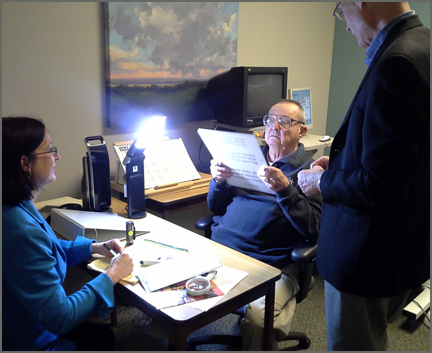Low vision means that even with regular glasses, contact lenses, medicine, or surgery, people find everyday tasks difficult to do. Millions of Americans lose some of their vision every year. Irreversible vision loss is most common among people over age 65.
Most people develop low vision because of eye diseases and health conditions like macular degeneration, cataract, glaucoma, and diabetes. While vision that’s lost usually cannot be restored, many people can make the most of the vision they have. Your eye care professional can tell the difference between normal changes in the aging eye and those caused by eye diseases.
Download our printable Low Vision Questionnaire (PDF) to see if you or someone you know may be a candidate for low vision care.
Even after medication, shots, surgery and with your regular glasses, do you have difficulty:
- Recognizing faces of friends and relatives?
- Doing things that require you to see well up close, like reading, seeing a computer screen, cooking, sewing, or fixing things around the house?
- Picking out and matching the color of your clothes?
- Doing things at work or home because lights seem dimmer than they used to?
- Driving safely, reading street and bus signs or the signs in a grocery store?
- Performing visual tasks to the degree you were able to before vision loss, illness, injury or a life-altering event?
- Walking, bumping into things, maintaining balance, seeing curbs or judging depth perception?
- Distinguishing contrast or light sensitivity?
You don’t necessarily need a referral to see us. However, we prefer to work with your general care optometrist and ophthalmologist because we do not provide routine eye care. If you believe your vision has recently changed, you should see your established eye care professional as soon as possible. You should have regular dilated eye exams to determine your eye health, but there are many signs that can signal the need for vision rehabilitation.

Low Vision Team: Patient, Low Vision Optometrist and Certified Low Vision Therapist
Did you know?
- One in six Americans age 45 or older –representing 16.5 million people-report some form of vision impairment even when wearing lenses.
- By age 76, one in four report some form of vision impairment.
- The number of visually impaired persons will double by 2030.
